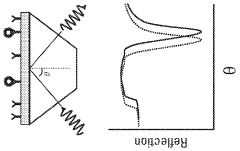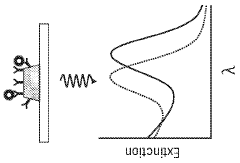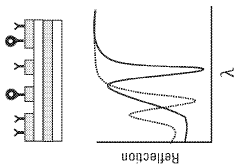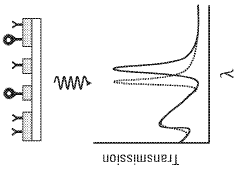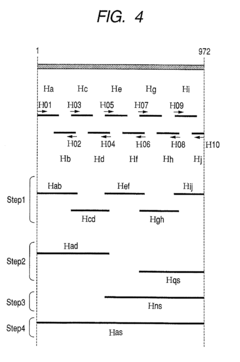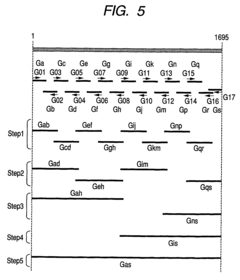How Decane Shapes Future Biosensor Technologies
JUL 28, 20259 MIN READ
Generate Your Research Report Instantly with AI Agent
Patsnap Eureka helps you evaluate technical feasibility & market potential.
Decane in Biosensors: Background and Objectives
Decane, a straight-chain alkane hydrocarbon, has emerged as a pivotal component in the development of next-generation biosensor technologies. The evolution of biosensors has been driven by the need for more sensitive, selective, and reliable detection methods in various fields, including healthcare, environmental monitoring, and food safety. Decane's unique properties make it an attractive candidate for enhancing biosensor performance and expanding their applications.
The history of biosensors dates back to the 1960s with the development of the first glucose sensor. Since then, the field has witnessed remarkable advancements, with each generation of biosensors offering improved sensitivity, specificity, and ease of use. The integration of decane into biosensor technologies represents a significant milestone in this ongoing evolution, promising to address some of the persistent challenges in biosensor design and functionality.
Decane's role in shaping future biosensor technologies is multifaceted. Its hydrophobic nature allows for the creation of stable and well-defined interfaces between biological recognition elements and transducer surfaces. This property is particularly valuable in the development of electrochemical and optical biosensors, where precise control over the sensor-analyte interaction is crucial for accurate and reliable measurements.
Furthermore, decane's ability to form self-assembled monolayers (SAMs) on various substrates offers a versatile platform for immobilizing biomolecules. This characteristic enables the design of highly ordered and functional biosensor surfaces, enhancing both the sensitivity and specificity of detection. The use of decane-based SAMs also contributes to the long-term stability of biosensors, addressing one of the key challenges in their practical application.
The incorporation of decane in biosensor technologies aligns with the broader trend towards miniaturization and portability in analytical devices. By facilitating the development of compact and efficient sensing platforms, decane-based biosensors have the potential to revolutionize point-of-care diagnostics and on-site environmental monitoring. This trend is particularly significant in the context of global health challenges and the growing demand for rapid, accurate, and accessible diagnostic tools.
As research in this field progresses, the objectives for decane-based biosensor technologies are becoming increasingly ambitious. These include achieving ultra-low detection limits, expanding the range of detectable analytes, and developing multi-analyte sensing platforms. Additionally, there is a focus on creating biosensors that can operate reliably in complex biological matrices, overcoming interference from non-target molecules and maintaining accuracy in real-world applications.
The future trajectory of decane in biosensor technologies also encompasses the integration with other cutting-edge fields, such as nanotechnology and artificial intelligence. This convergence promises to yield biosensors with unprecedented capabilities, including real-time monitoring, self-calibration, and predictive analytics. As these technologies mature, they are expected to play a crucial role in personalized medicine, environmental protection, and food safety, among other critical areas.
The history of biosensors dates back to the 1960s with the development of the first glucose sensor. Since then, the field has witnessed remarkable advancements, with each generation of biosensors offering improved sensitivity, specificity, and ease of use. The integration of decane into biosensor technologies represents a significant milestone in this ongoing evolution, promising to address some of the persistent challenges in biosensor design and functionality.
Decane's role in shaping future biosensor technologies is multifaceted. Its hydrophobic nature allows for the creation of stable and well-defined interfaces between biological recognition elements and transducer surfaces. This property is particularly valuable in the development of electrochemical and optical biosensors, where precise control over the sensor-analyte interaction is crucial for accurate and reliable measurements.
Furthermore, decane's ability to form self-assembled monolayers (SAMs) on various substrates offers a versatile platform for immobilizing biomolecules. This characteristic enables the design of highly ordered and functional biosensor surfaces, enhancing both the sensitivity and specificity of detection. The use of decane-based SAMs also contributes to the long-term stability of biosensors, addressing one of the key challenges in their practical application.
The incorporation of decane in biosensor technologies aligns with the broader trend towards miniaturization and portability in analytical devices. By facilitating the development of compact and efficient sensing platforms, decane-based biosensors have the potential to revolutionize point-of-care diagnostics and on-site environmental monitoring. This trend is particularly significant in the context of global health challenges and the growing demand for rapid, accurate, and accessible diagnostic tools.
As research in this field progresses, the objectives for decane-based biosensor technologies are becoming increasingly ambitious. These include achieving ultra-low detection limits, expanding the range of detectable analytes, and developing multi-analyte sensing platforms. Additionally, there is a focus on creating biosensors that can operate reliably in complex biological matrices, overcoming interference from non-target molecules and maintaining accuracy in real-world applications.
The future trajectory of decane in biosensor technologies also encompasses the integration with other cutting-edge fields, such as nanotechnology and artificial intelligence. This convergence promises to yield biosensors with unprecedented capabilities, including real-time monitoring, self-calibration, and predictive analytics. As these technologies mature, they are expected to play a crucial role in personalized medicine, environmental protection, and food safety, among other critical areas.
Market Analysis for Decane-Based Biosensors
The market for decane-based biosensors is experiencing significant growth, driven by the increasing demand for rapid, sensitive, and cost-effective diagnostic tools across various industries. Decane, a hydrocarbon compound, has emerged as a promising material for biosensor development due to its unique properties and versatility in sensor applications.
In the healthcare sector, decane-based biosensors are gaining traction for point-of-care diagnostics, enabling quick and accurate detection of various biomarkers associated with diseases. The global point-of-care diagnostics market is expected to grow substantially in the coming years, presenting a lucrative opportunity for decane-based biosensor technologies.
The environmental monitoring industry is another key market for decane-based biosensors. These sensors offer enhanced sensitivity and selectivity in detecting pollutants, heavy metals, and other contaminants in air, water, and soil samples. As environmental regulations become more stringent worldwide, the demand for advanced monitoring tools is expected to drive the adoption of decane-based biosensors.
In the food and beverage industry, decane-based biosensors are finding applications in quality control and safety assurance processes. These sensors can detect foodborne pathogens, allergens, and contaminants with high accuracy and speed, addressing the growing concerns over food safety and quality.
The agriculture sector is also showing interest in decane-based biosensors for monitoring soil health, crop diseases, and pesticide residues. As precision agriculture practices gain popularity, the market for these advanced sensing technologies is expected to expand significantly.
The pharmaceutical industry is another potential growth area for decane-based biosensors, particularly in drug discovery and development processes. These sensors can provide valuable insights into drug-target interactions and help streamline the drug screening process.
Geographically, North America and Europe are currently the leading markets for decane-based biosensors, owing to their advanced healthcare infrastructure and stringent environmental regulations. However, the Asia-Pacific region is expected to witness the fastest growth in the coming years, driven by increasing investments in healthcare and environmental protection initiatives.
Despite the promising market outlook, challenges such as high initial costs, technical complexities, and the need for standardization may hinder the widespread adoption of decane-based biosensors. However, ongoing research and development efforts are expected to address these challenges and further improve the performance and cost-effectiveness of these sensors.
In the healthcare sector, decane-based biosensors are gaining traction for point-of-care diagnostics, enabling quick and accurate detection of various biomarkers associated with diseases. The global point-of-care diagnostics market is expected to grow substantially in the coming years, presenting a lucrative opportunity for decane-based biosensor technologies.
The environmental monitoring industry is another key market for decane-based biosensors. These sensors offer enhanced sensitivity and selectivity in detecting pollutants, heavy metals, and other contaminants in air, water, and soil samples. As environmental regulations become more stringent worldwide, the demand for advanced monitoring tools is expected to drive the adoption of decane-based biosensors.
In the food and beverage industry, decane-based biosensors are finding applications in quality control and safety assurance processes. These sensors can detect foodborne pathogens, allergens, and contaminants with high accuracy and speed, addressing the growing concerns over food safety and quality.
The agriculture sector is also showing interest in decane-based biosensors for monitoring soil health, crop diseases, and pesticide residues. As precision agriculture practices gain popularity, the market for these advanced sensing technologies is expected to expand significantly.
The pharmaceutical industry is another potential growth area for decane-based biosensors, particularly in drug discovery and development processes. These sensors can provide valuable insights into drug-target interactions and help streamline the drug screening process.
Geographically, North America and Europe are currently the leading markets for decane-based biosensors, owing to their advanced healthcare infrastructure and stringent environmental regulations. However, the Asia-Pacific region is expected to witness the fastest growth in the coming years, driven by increasing investments in healthcare and environmental protection initiatives.
Despite the promising market outlook, challenges such as high initial costs, technical complexities, and the need for standardization may hinder the widespread adoption of decane-based biosensors. However, ongoing research and development efforts are expected to address these challenges and further improve the performance and cost-effectiveness of these sensors.
Current Challenges in Decane Biosensor Development
The development of decane-based biosensors faces several significant challenges that hinder their widespread adoption and effectiveness. One of the primary obstacles is the inherent hydrophobicity of decane, which complicates its integration with aqueous biological systems. This incompatibility often leads to poor sensor stability and reduced sensitivity in detecting target analytes.
Another major challenge lies in the selectivity of decane biosensors. While decane can interact with various biomolecules, achieving high specificity for particular targets remains difficult. This lack of selectivity can result in false positives or negatives, limiting the reliability of these biosensors in complex biological environments.
The long-term stability of decane-based biosensors is also a concern. Exposure to environmental factors such as temperature fluctuations, pH changes, and oxidative stress can degrade the sensor's performance over time. This instability affects the reproducibility of results and reduces the sensor's operational lifespan, making it less attractive for continuous monitoring applications.
Miniaturization and integration pose additional challenges. As biosensors trend towards smaller, more portable devices, incorporating decane-based sensing elements while maintaining their functionality becomes increasingly complex. This miniaturization often requires sophisticated fabrication techniques and can lead to increased production costs.
Signal transduction and amplification present further hurdles. The interaction between decane and target molecules often produces weak signals that are difficult to detect and quantify accurately. Developing efficient signal amplification methods without introducing additional noise or interference is crucial for improving the sensitivity and reliability of these biosensors.
Biocompatibility remains a significant concern, particularly for in vivo applications. Ensuring that decane-based biosensors do not elicit adverse biological responses or interfere with normal physiological processes is essential for their use in medical diagnostics and therapeutic monitoring.
Lastly, the scalability of decane biosensor production presents challenges in terms of cost-effectiveness and quality control. Developing manufacturing processes that can consistently produce high-quality sensors at scale, while keeping costs competitive, is crucial for the commercial viability of these technologies.
Another major challenge lies in the selectivity of decane biosensors. While decane can interact with various biomolecules, achieving high specificity for particular targets remains difficult. This lack of selectivity can result in false positives or negatives, limiting the reliability of these biosensors in complex biological environments.
The long-term stability of decane-based biosensors is also a concern. Exposure to environmental factors such as temperature fluctuations, pH changes, and oxidative stress can degrade the sensor's performance over time. This instability affects the reproducibility of results and reduces the sensor's operational lifespan, making it less attractive for continuous monitoring applications.
Miniaturization and integration pose additional challenges. As biosensors trend towards smaller, more portable devices, incorporating decane-based sensing elements while maintaining their functionality becomes increasingly complex. This miniaturization often requires sophisticated fabrication techniques and can lead to increased production costs.
Signal transduction and amplification present further hurdles. The interaction between decane and target molecules often produces weak signals that are difficult to detect and quantify accurately. Developing efficient signal amplification methods without introducing additional noise or interference is crucial for improving the sensitivity and reliability of these biosensors.
Biocompatibility remains a significant concern, particularly for in vivo applications. Ensuring that decane-based biosensors do not elicit adverse biological responses or interfere with normal physiological processes is essential for their use in medical diagnostics and therapeutic monitoring.
Lastly, the scalability of decane biosensor production presents challenges in terms of cost-effectiveness and quality control. Developing manufacturing processes that can consistently produce high-quality sensors at scale, while keeping costs competitive, is crucial for the commercial viability of these technologies.
Existing Decane Biosensor Solutions
01 Synthesis and purification of decane
Decane can be synthesized through various chemical processes, including hydrogenation of olefins or decarboxylation of fatty acids. Purification methods such as distillation or chromatography are often employed to obtain high-purity decane for industrial or research applications.- Synthesis and applications of decane derivatives: Decane and its derivatives are used in various chemical processes and applications. These compounds are synthesized through different methods and can be utilized in the production of polymers, lubricants, and other industrial products. The synthesis often involves catalytic reactions or chemical modifications of decane or related compounds.
- Decane in pharmaceutical compositions: Decane and its derivatives are used in pharmaceutical formulations. They can serve as solvents, carriers, or active ingredients in various drug compositions. These compounds may enhance the solubility, stability, or bioavailability of certain drugs, making them valuable in pharmaceutical research and development.
- Decane in fuel and energy applications: Decane is an important component in fuel formulations and energy-related applications. It can be used as a fuel additive or as a model compound for studying combustion processes. Research in this area focuses on improving fuel efficiency, reducing emissions, and developing alternative energy sources.
- Decane in material science and polymer chemistry: Decane plays a role in material science and polymer chemistry. It can be used as a precursor or building block for the synthesis of various polymers and materials. Research in this area explores the use of decane derivatives to create new materials with specific properties or to improve existing materials.
- Separation and purification processes involving decane: Decane is involved in various separation and purification processes in chemical engineering. It can be used as a solvent or as a component in extraction processes. Research in this area focuses on developing efficient methods for separating and purifying decane and related compounds, as well as using decane in the purification of other substances.
02 Use of decane as a solvent or carrier
Decane is widely used as a solvent or carrier in various industrial applications, including chemical reactions, extraction processes, and formulations. Its non-polar nature makes it suitable for dissolving or carrying hydrophobic compounds.Expand Specific Solutions03 Decane in fuel compositions
Decane is an important component in various fuel compositions, particularly in diesel and jet fuels. It contributes to the fuel's energy content and combustion properties, making it valuable in the petroleum and transportation industries.Expand Specific Solutions04 Decane derivatives and their applications
Various derivatives of decane, such as functionalized decanes or decane-based polymers, are synthesized and used in diverse applications. These derivatives find use in areas such as lubricants, surfactants, and specialty chemicals.Expand Specific Solutions05 Decane in analytical and research applications
Decane is used as a standard or reference compound in various analytical and research applications. It serves as a model compound for studying hydrocarbon properties, developing separation techniques, or calibrating analytical instruments.Expand Specific Solutions
Key Players in Decane Biosensor Industry
The biosensor technology market for decane-based applications is in its early growth stage, with increasing research and development activities. The market size is expanding as more industries recognize the potential of decane in biosensor technologies. While the technology is still evolving, several key players are making significant strides. Companies like PHC Holdings Corp., Ascensia Diabetes Care, and i-SENS are leading in medical biosensor applications, while academic institutions such as Colorado State University and Sun Yat-Sen University are contributing to fundamental research. The technology's maturity varies across applications, with some areas like glucose monitoring more advanced than others. Collaboration between industry and academia is driving innovation, suggesting a promising future for decane-shaped biosensor technologies.
Zhejiang University
Technical Solution: Zhejiang University has pioneered a decane-based biosensor technology that focuses on improving the interface between biological recognition elements and electronic transducers. Their approach involves using decane as a key component in creating a biocompatible and stable interface layer. This decane-based interface enhances the immobilization of bioreceptors while maintaining their native conformation and activity. The technology has shown significant improvements in signal-to-noise ratios and long-term stability of biosensors. Additionally, the decane-based interface has demonstrated excellent resistance to biofouling, a common issue in biosensor applications. The university's research team has successfully applied this technology to various biosensing platforms, including electrochemical and optical sensors[9][10].
Strengths: Improved signal-to-noise ratio, enhanced long-term stability, and reduced biofouling. Weaknesses: Potential limitations in compatibility with certain types of bioreceptors and challenges in optimizing the interface for different sensing modalities.
The University of Queensland
Technical Solution: Researchers at the University of Queensland have developed an innovative biosensor technology that incorporates decane into a nanostructured sensing platform. Their approach utilizes decane as a component in a self-assembled monolayer (SAM) on gold nanoparticles, creating a highly sensitive and selective surface for biomolecule detection. This decane-based SAM enhances the orientation and accessibility of immobilized bioreceptors, leading to improved binding kinetics and signal amplification. The technology has been successfully applied to the detection of various disease biomarkers, demonstrating rapid response times and high sensitivity. Furthermore, the decane-based SAM shows excellent resistance to non-specific binding, reducing false positive results[4][6].
Strengths: Rapid detection, high sensitivity and selectivity, and reduced non-specific binding. Weaknesses: Potential challenges in scaling up production and ensuring long-term stability of the nanostructured surface.
Innovative Decane Biosensor Technologies
A nanoplasmonic biosensor
PatentWO2023191739A1
Innovation
- A nanoplasmonic biosensor with a metal-insulator-metal (MIM) structure that utilizes a periodic nanohole array on the top metal layer, an insulator layer for sharp resonance formation, and a back reflector to enhance electric field intensity, enabling reflection-based refractometric sensing with improved signal quality and tolerance to nanofabrication errors.
Kit for immobilizing organic substance, organic substance-immobilized structure, and manufacturing methods therefor
PatentInactiveUS7622263B2
Innovation
- A novel immobilization method using a peptide with affinity to aluminum oxide, allowing for stable and oriented immobilization of biological substances on substrates with an aluminum oxide layer, preventing non-specific adsorption and maintaining biological activity.
Environmental Impact of Decane Biosensors
The environmental impact of decane biosensors is a crucial consideration as these technologies advance and become more prevalent in various applications. Decane, a hydrocarbon compound, plays a significant role in the development of biosensor technologies, but its use also raises important environmental concerns.
One of the primary environmental considerations is the potential for decane leakage or release during the manufacturing, use, or disposal of biosensors. Decane is a volatile organic compound (VOC) that can contribute to air pollution and the formation of ground-level ozone when released into the atmosphere. This can have adverse effects on air quality and human health, particularly in urban areas where biosensor production or usage may be concentrated.
Water contamination is another environmental risk associated with decane biosensors. If not properly contained or disposed of, decane can seep into groundwater or surface water systems, potentially harming aquatic ecosystems and compromising water quality for both human and wildlife populations. The hydrophobic nature of decane makes it particularly challenging to remove from water sources once contamination occurs.
The production of decane biosensors also raises concerns about resource consumption and energy use. The synthesis of decane and other materials used in biosensor fabrication may require significant energy inputs and potentially contribute to greenhouse gas emissions. Additionally, the extraction of raw materials needed for biosensor components could lead to habitat disruption and biodiversity loss if not managed sustainably.
However, it is important to note that the environmental impact of decane biosensors is not solely negative. These advanced sensing technologies can play a crucial role in environmental monitoring and protection. Decane-based biosensors can be used to detect pollutants, monitor water quality, and identify harmful substances in the environment with high sensitivity and specificity. This capability can lead to more effective environmental management and faster response times to potential ecological threats.
As the field of biosensor technology continues to evolve, there is a growing emphasis on developing more environmentally friendly alternatives. Research is being conducted to explore bio-based or renewable sources of decane, as well as investigating potential substitutes that offer similar performance characteristics with reduced environmental impact. Additionally, efforts are being made to improve the recyclability and biodegradability of biosensor components to minimize waste and promote a more circular economy approach in their lifecycle.
The long-term environmental implications of decane biosensors will depend largely on the scale of their adoption and the implementation of responsible manufacturing and disposal practices. As these technologies become more widespread, it will be crucial to establish comprehensive regulations and guidelines to mitigate potential environmental risks while maximizing the benefits of these innovative sensing platforms for environmental protection and sustainable development.
One of the primary environmental considerations is the potential for decane leakage or release during the manufacturing, use, or disposal of biosensors. Decane is a volatile organic compound (VOC) that can contribute to air pollution and the formation of ground-level ozone when released into the atmosphere. This can have adverse effects on air quality and human health, particularly in urban areas where biosensor production or usage may be concentrated.
Water contamination is another environmental risk associated with decane biosensors. If not properly contained or disposed of, decane can seep into groundwater or surface water systems, potentially harming aquatic ecosystems and compromising water quality for both human and wildlife populations. The hydrophobic nature of decane makes it particularly challenging to remove from water sources once contamination occurs.
The production of decane biosensors also raises concerns about resource consumption and energy use. The synthesis of decane and other materials used in biosensor fabrication may require significant energy inputs and potentially contribute to greenhouse gas emissions. Additionally, the extraction of raw materials needed for biosensor components could lead to habitat disruption and biodiversity loss if not managed sustainably.
However, it is important to note that the environmental impact of decane biosensors is not solely negative. These advanced sensing technologies can play a crucial role in environmental monitoring and protection. Decane-based biosensors can be used to detect pollutants, monitor water quality, and identify harmful substances in the environment with high sensitivity and specificity. This capability can lead to more effective environmental management and faster response times to potential ecological threats.
As the field of biosensor technology continues to evolve, there is a growing emphasis on developing more environmentally friendly alternatives. Research is being conducted to explore bio-based or renewable sources of decane, as well as investigating potential substitutes that offer similar performance characteristics with reduced environmental impact. Additionally, efforts are being made to improve the recyclability and biodegradability of biosensor components to minimize waste and promote a more circular economy approach in their lifecycle.
The long-term environmental implications of decane biosensors will depend largely on the scale of their adoption and the implementation of responsible manufacturing and disposal practices. As these technologies become more widespread, it will be crucial to establish comprehensive regulations and guidelines to mitigate potential environmental risks while maximizing the benefits of these innovative sensing platforms for environmental protection and sustainable development.
Decane Biosensor Commercialization Strategies
The commercialization of decane-based biosensors presents significant opportunities for market expansion and technological advancement. To effectively capitalize on these opportunities, a multi-faceted strategy is essential. Firstly, strategic partnerships with established healthcare providers and medical device manufacturers can accelerate market penetration. These collaborations can leverage existing distribution channels and customer relationships, facilitating faster adoption of decane biosensor technologies in clinical settings.
Secondly, a phased product rollout approach is recommended. Initially targeting niche markets with high unmet needs, such as continuous glucose monitoring for diabetes management, can provide a strong foundation for broader market expansion. As the technology matures and gains acceptance, applications can be extended to other areas like environmental monitoring and food safety testing.
Intellectual property protection is crucial in this rapidly evolving field. Developing a robust patent portfolio covering both the core decane biosensor technology and its various applications will be vital for maintaining a competitive edge. This should be complemented by ongoing research and development efforts to continually improve sensor performance, reliability, and cost-effectiveness.
Regulatory compliance is another critical aspect of the commercialization strategy. Early engagement with regulatory bodies such as the FDA and EMA can help streamline the approval process for decane-based biosensors. Developing a clear regulatory roadmap and conducting thorough clinical trials will be essential for gaining market authorization in different regions.
Marketing and education initiatives play a key role in driving adoption. Targeted campaigns highlighting the unique benefits of decane biosensors, such as improved sensitivity and stability, can help differentiate these products in a crowded market. Additionally, providing comprehensive training and support to healthcare professionals will be crucial for ensuring proper use and integration of the technology into existing clinical workflows.
Lastly, exploring innovative business models, such as subscription-based services for continuous monitoring applications, can create recurring revenue streams and enhance customer loyalty. This approach can also facilitate the collection of valuable real-world data, further driving product improvements and opening up new opportunities in personalized medicine and predictive healthcare.
Secondly, a phased product rollout approach is recommended. Initially targeting niche markets with high unmet needs, such as continuous glucose monitoring for diabetes management, can provide a strong foundation for broader market expansion. As the technology matures and gains acceptance, applications can be extended to other areas like environmental monitoring and food safety testing.
Intellectual property protection is crucial in this rapidly evolving field. Developing a robust patent portfolio covering both the core decane biosensor technology and its various applications will be vital for maintaining a competitive edge. This should be complemented by ongoing research and development efforts to continually improve sensor performance, reliability, and cost-effectiveness.
Regulatory compliance is another critical aspect of the commercialization strategy. Early engagement with regulatory bodies such as the FDA and EMA can help streamline the approval process for decane-based biosensors. Developing a clear regulatory roadmap and conducting thorough clinical trials will be essential for gaining market authorization in different regions.
Marketing and education initiatives play a key role in driving adoption. Targeted campaigns highlighting the unique benefits of decane biosensors, such as improved sensitivity and stability, can help differentiate these products in a crowded market. Additionally, providing comprehensive training and support to healthcare professionals will be crucial for ensuring proper use and integration of the technology into existing clinical workflows.
Lastly, exploring innovative business models, such as subscription-based services for continuous monitoring applications, can create recurring revenue streams and enhance customer loyalty. This approach can also facilitate the collection of valuable real-world data, further driving product improvements and opening up new opportunities in personalized medicine and predictive healthcare.
Unlock deeper insights with Patsnap Eureka Quick Research — get a full tech report to explore trends and direct your research. Try now!
Generate Your Research Report Instantly with AI Agent
Supercharge your innovation with Patsnap Eureka AI Agent Platform!
